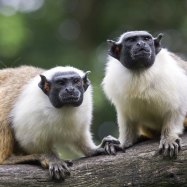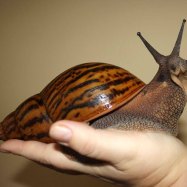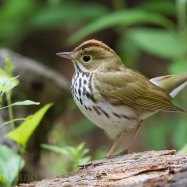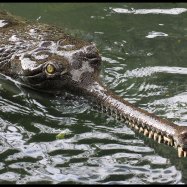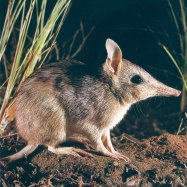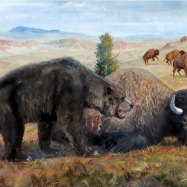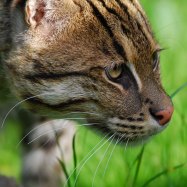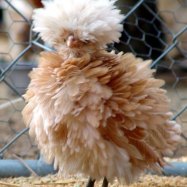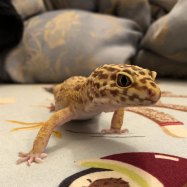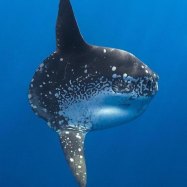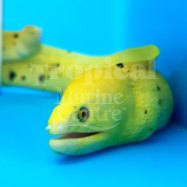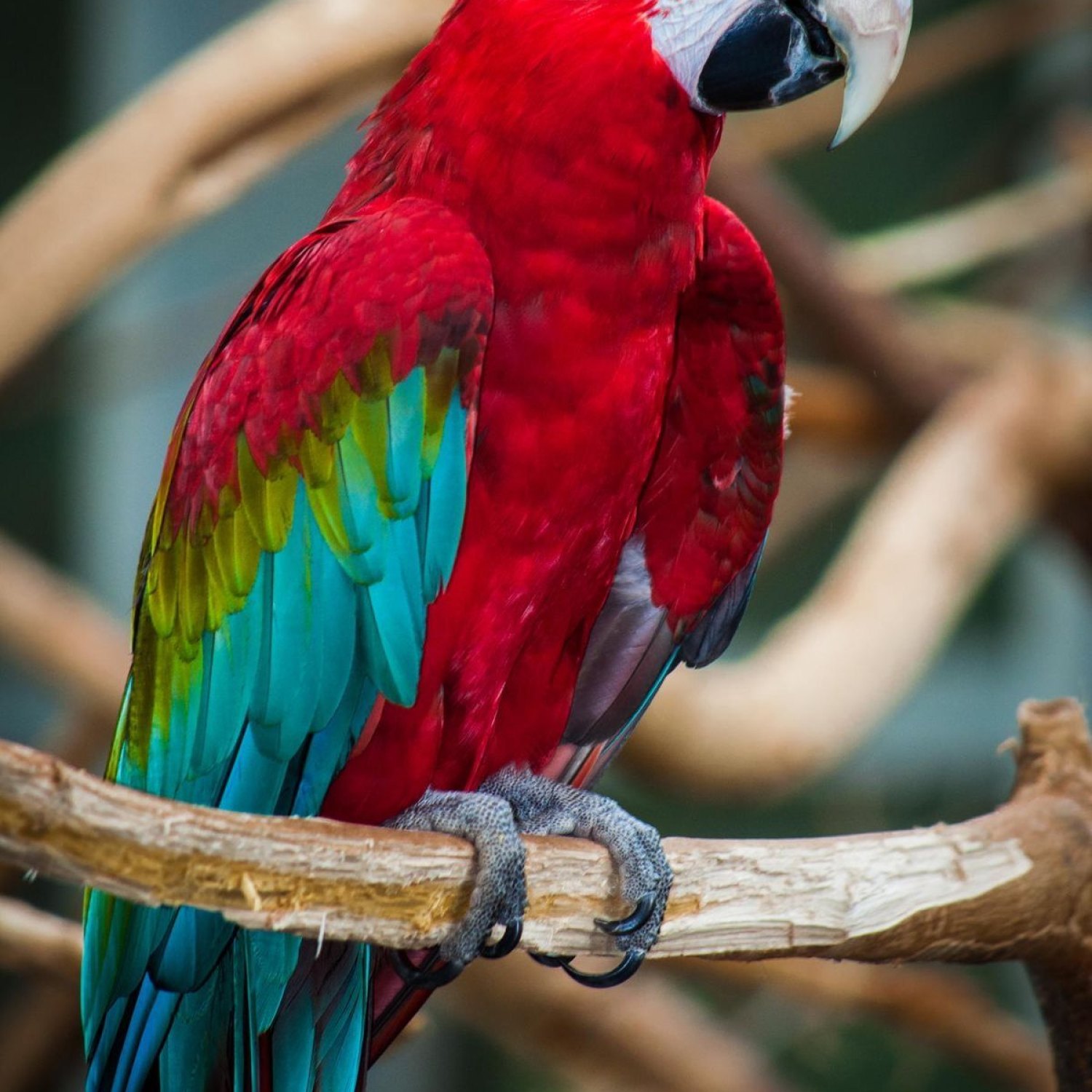
Macaw
30-34 inches
Meet the mighty Macaw, a colorful parrot that can grow up to 30-34 inches long. These stunning birds are commonly found in the lush rainforests of Central and South America. Belonging to the Psittacidae family, their large and stocky body with long tails makes them a sight to behold. Keep an eye out for these beautiful creatures on your next rainforest adventure! #Macaw #RainforestBirds #AnimalFacts
Animal Details Summary:
Common Name: Macaw
Kingdom: Animalia
Habitat: Tropical rainforests, woodlands, and savannahs
The Magnificent Macaw: A Colorful Tropical Bird
The rainforests of Central and South America are known for their incredible biodiversity, housing some of the most unique and fascinating animal species in the world. Among these species is the macaw, a beautiful and intelligent bird that captures the hearts of all who encounter it.Scientifically known as Ara macao, the macaw is commonly referred to simply as "macaw." It falls under the Animalia kingdom, which encompasses all animal species, and falls into the phylum Chordata, class Aves, and order Psittaciformes Macaw. Its closest relatives include other colorful parrots and parakeets, and it belongs to the Psittacidae family.
Habitat and Distribution
Macaws are found in various habitats within Central and South America, including tropical rainforests, woodlands, and savannahs. They are native to countries such as Brazil, Bolivia, Ecuador, and Peru, among others. However, due to their popularity as pets, macaws can also be found in other parts of the world, including the United States and Europe.Within their natural habitats, macaws are highly adaptable and can thrive in diverse environments. However, their population has been heavily impacted by deforestation and illegal pet trade, leading to a decline in their numbers in the wild.
Feeding and Diet
Macaws are omnivorous birds, meaning they consume a variety of foods, including fruits, nuts, seeds, insects, and small vertebrates. In their natural habitats, they play a crucial role in seed dispersal, making them an essential species for maintaining the balance of their ecosystem.In captivity, macaws require a diverse diet to ensure they receive all the necessary nutrients Maltese Shih Tzu. A balanced diet for macaws includes a mix of fresh fruits, vegetables, nuts, and specially formulated parrot pellets. It is essential to note that they are messy eaters, so providing a variety of foods can also help keep them stimulated and entertained.
Physical Characteristics
One of the most striking features of the macaw is its bright and vibrant colors. Their feathers come in various shades of red, blue, yellow, and green, making them one of the most colorful birds in the world. These colors serve as a defense mechanism, helping them blend into their surroundings and avoid predators.In addition to their vivid plumage, macaws have large, stocky bodies with long tails. They have strong beaks that they use for cracking open nuts and seeds, as well as climbing, gripping, and exploring their environment.
Size and Weight
Macaws are some of the largest parrot species in the world, reaching lengths of 30-34 inches from beak to tail. They can weigh anywhere from 2 to 4 pounds, depending on the species. Their size and weight make them a popular choice for pet owners and also allows them to be highly adaptable in their natural habitats.Behavior and Social Structure
Macaws are highly social birds and typically live in flocks ranging from a few individuals to hundreds. They are known for their loud, squawking calls, which serve as a way for flocks to communicate with each other. Within these flocks, macaws have a structured social hierarchy, with leaders taking charge and making decisions for the group.In addition to their social nature, macaws are also highly intelligent birds, capable of learning complex tasks and mimicking human speech. In their natural habitats, they use their intelligence to problem-solve and find food, as well as to bond with their flock members.
Threats and Conservation
As mentioned earlier, macaws face numerous threats in the wild, with their population declining due to deforestation and illegal pet trade. In some areas, they are also hunted for their feathers, which are used in traditional ceremonies and for decorative purposes.To protect and conserve macaw populations, various organizations and governments have implemented initiatives such as habitat protection and anti-poaching laws. These efforts have helped increase their population in some areas, but more work still needs to be done to secure the long-term survival of these magnificent birds.
In Conclusion
The macaw is a fascinating and beautiful bird that represents the rich biodiversity of the rainforests of Central and South America. Its bright colors, social behavior, and intelligence make it a popular choice among pet owners. However, it is crucial to remember that these birds are not suitable as pets unless they are responsibly bred and cared for.Their presence in their natural habitats is vital for the health and balance of these ecosystems, making it essential to protect and preserve their populations. By learning about and appreciating the macaw and its place in the natural world, we can all contribute to the efforts to conserve this magnificent bird for future generations to enjoy.

Macaw
Animal Details Macaw - Scientific Name: Ara macao
- Category: Animals M
- Scientific Name: Ara macao
- Common Name: Macaw
- Kingdom: Animalia
- Phylum: Chordata
- Class: Aves
- Order: Psittaciformes
- Family: Psittacidae
- Habitat: Tropical rainforests, woodlands, and savannahs
- Feeding Method: Omnivorous
- Geographical Distribution: Central and South America
- Country of Origin: Various countries in Central and South America
- Location: Rainforests of Central and South America
- Animal Coloration: Brightly colored: red, blue, yellow, green
- Body Shape: Large, stocky with long tails
- Length: 30-34 inches
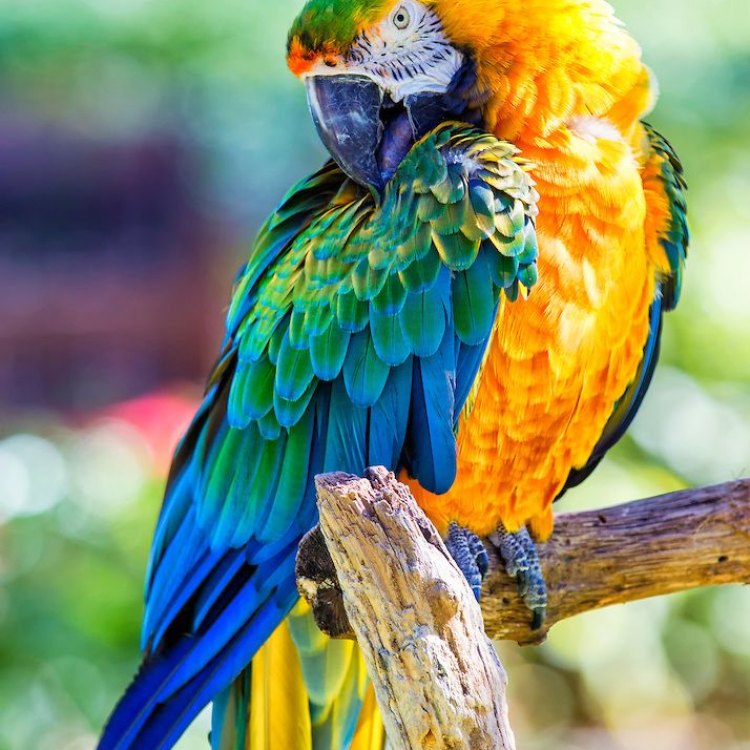
Macaw
- Adult Size: Large, up to 40 inches long
- Average Lifespan: 50-70 years
- Reproduction: Sexual reproduction
- Reproductive Behavior: Monogamous, pair bonds for life
- Sound or Call: Loud screeching calls
- Migration Pattern: Non-migratory, some local movements
- Social Groups: Form flocks of up to 100 birds
- Behavior: Intelligent, curious, and social
- Threats: Habitat loss, illegal pet trade
- Conservation Status: Least Concern
- Impact on Ecosystem: Seed dispersers
- Human Use: Pet trade, symbolism
- Distinctive Features: Brightly colored plumage, large and powerful beak
- Interesting Facts: Macaws are known for their ability to mimic human speech.
- Predator: Harpy eagles, large snakes
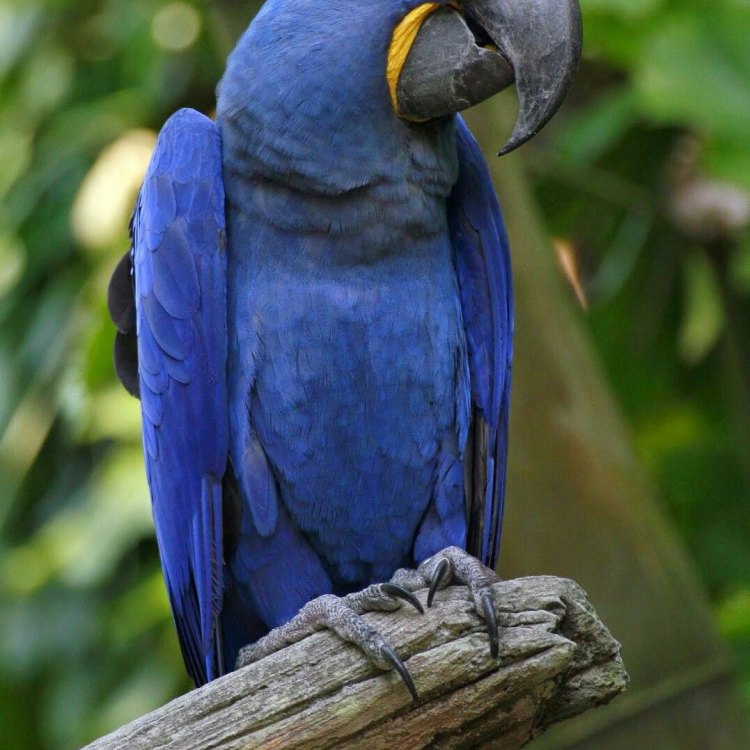
Ara macao
The Colorful and Fascinating World of Macaws: An In-depth Look into this Vibrant Species
When you hear the word macaw, what comes to mind? Is it the brightly colored plumage? Or their ability to mimic human speech? Macaws are often considered the epitome of tropical birds, with their vibrant colors and captivating behavior. But there is so much more to these birds than meets the eye.In this article, we will take a closer look at macaws, exploring their physical characteristics, behavior, and ecological impact. You'll learn why these birds are more than just pretty faces and why it's crucial to protect them from threats like the illegal pet trade and habitat loss PeaceOfAnimals.Com.
The Basics: Adult Size, Average Lifespan, and Reproduction
Macaws are part of the parrot family and are some of the largest birds in the world. They can grow up to 40 inches long and weigh around 3 pounds. These impressive birds have a long lifespan, averaging between 50 to 70 years in captivity.When it comes to reproduction, macaws engage in sexual reproduction and are monogamous. They form pair bonds for life, showing a high level of commitment and loyalty to their partners. Mating season for macaws typically occurs during the rainy season, where food is more plentiful. During this period, the pair will perform a ritual dance to strengthen their bond and then mate.
Vocalization and Social Behavior
One of the most defining features of macaws is their loud, screeching calls. Their vocalization is a vital form of communication, used for various purposes such as warning others of predators or calling out to their flockmates Mussurana Snake.Speaking of flocks, macaws are highly social birds and form flocks of up to 100 birds. These flocks often consist of multiple species of macaws, and they have a hierarchical structure with dominant pairs leading the group. Within these flocks, macaws display intelligent, curious, and social behavior, often playing and grooming each other.
Migration Patterns and Human Use
Macaws are mainly non-migratory birds, meaning they do not travel long distances every year. However, some species do engage in local movements to follow food sources or find suitable nesting sites. One notable example is the Hyacinth macaw, which is known to travel long distances to find clay licks to supplement its diet.Unfortunately, macaws have also been extensively used by humans for their colorful feathers and as pets. The pet trade and the demand for bird feathers in traditional cultures have led to devastating consequences for macaw populations. Many of these birds are captured from the wild, causing a decline in their numbers.
Distinctive Features and Impact on Ecosystem
Macaws have several distinctive physical features, making them stand out among other birds. Their brightly colored plumage is one of their most notable attributes, with shades of vibrant red, blue, green, and yellow. These colors play an essential role in courtship, as macaws use their plumage to attract potential mates.But the most striking feature of macaws is their large and powerful beaks. These beaks are specially adapted for cracking open hard nuts and seeds, which make up a significant portion of their diet. In addition to their physical features, macaws also play a crucial role in their ecosystem as seed dispersers. As they feed on fruits and nuts, they spread seeds to different locations, helping with plant reproduction and forest regeneration.
Threats to Macaws and Conservation Efforts
Despite being the icons of tropical forests, macaws are facing an uncertain future. They are listed as a species of Least Concern on the IUCN Red List, but that does not mean they are not vulnerable to threats. Habitat loss is one of the most significant threats to macaws, mainly due to deforestation for agricultural purposes.Moreover, macaws are often targeted by the illegal pet trade due to their attractive appearance and ability to mimic human speech. This demand for pet macaws leads to cruel practices, where these birds are forcefully taken from their natural habitats and transported long distances, resulting in high mortality rates.
Fortunately, various conservation efforts are in place to protect macaws and their habitats. Local communities, governments, and conservation organizations work together to promote sustainable practices and educate the public about the importance of protecting these birds' natural habitat. Sanctuaries and rehabilitation centers also play a vital role in rescuing and rehabilitating captive macaws, releasing them back into the wild.
Fun and Interesting Facts about Macaws
Here are some additional fascinating facts about macaws that will make you appreciate these birds even more:- Macaws are intelligent and can mimic human speech. However, they do not understand what they are saying and merely imitate the sounds they hear.
- Macaws are not suitable pets for everyone. They require a considerable amount of attention, space, and specialized care.
- Harpy eagles and large snakes are natural predators of macaws in the wild.
- Macaws have zygodactyl feet, meaning they have two toes pointing forward and two pointing backward, allowing them to grip branches efficiently.
- As social creatures, macaws enjoy interacting with their owners and are often referred to as "velcro birds" as they like to be physically close to their loved ones.
In Conclusion
Macaws are undoubtedly breathtakingly beautiful birds, but they are much more than that. These intelligent, curious, and social creatures play a crucial role in their ecosystem, and their decline would have a significant impact on the environment. It is our responsibility to protect and preserve these birds and their habitats for future generations to appreciate their beauty and importance.So, the next time you see a macaw, take a moment to admire their vibrant plumage and observe their behavior in the wild. And remember, every action, no matter how small, counts towards conservation efforts for these magnificent birds.
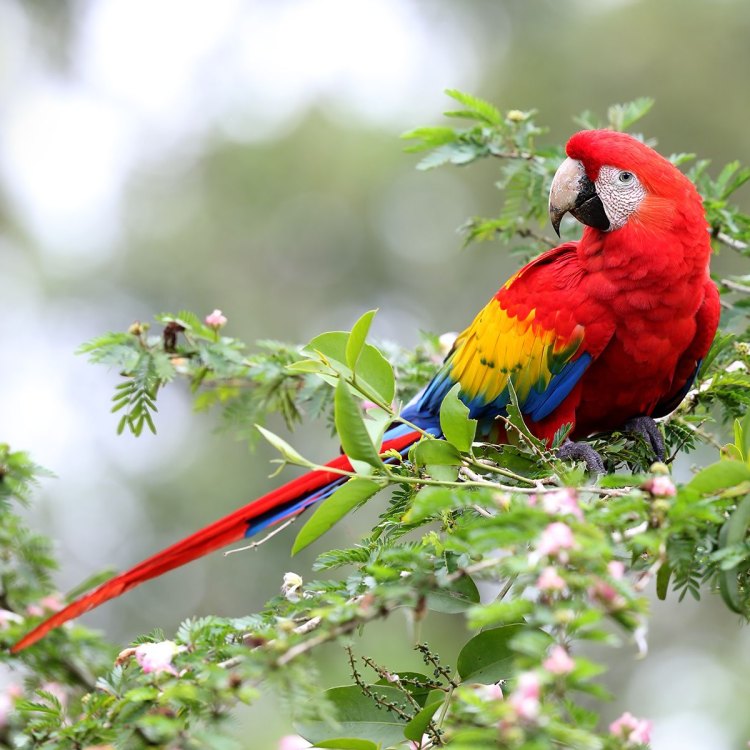
The Magnificent Macaw: A Colorful Tropical Bird
Disclaimer: The content provided is for informational purposes only. We cannot guarantee the accuracy of the information on this page 100%. All information provided here may change without prior notice.

